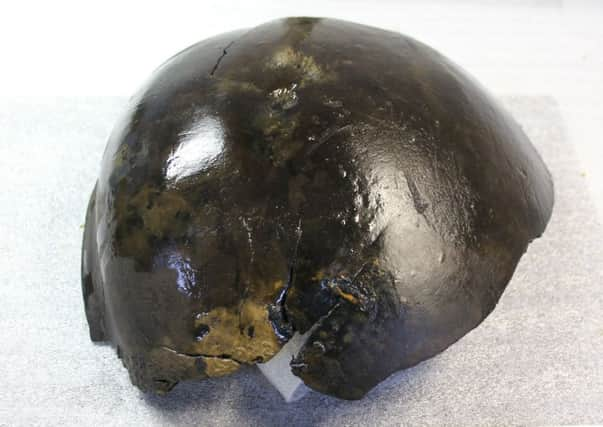First glimpse of 'perfect' 2,000-year-old bowl found in Orkney


The bowl was discovered over the summer in an underground chamber at The Cairns Broch archaeology site on South Ronaldsay.
It is hoped the object will shed further light on what the mysterious underground chambers were used for - and who was using them.
Advertisement
Hide AdAdvertisement
Hide AdOn-going conservation work has given an exceptionally rare glimpse of the wooden vessel which was held in a block of water-logged soil.
Conservators at AOC Archaeology, based in Edinburgh, this week removed the bowl from its surrounds to give a clear view of the object for the first time in 2,000 years.
The very finely carved vessel has an exceptionally smooth finish, appearing almost burnished, with tool marks visible inside.
It had been skilfully hand carved from a half-log of an alder tree.
Advertisement
Hide AdAdvertisement
Hide AdAlthough the object has split into two large pieces and about twenty smaller pieces at some point in the past, it is largely complete.
Conservators believe that an intricate repair job was once carried out on the bowl after small strips of bronze were detected on its surface with a larger strip running across the break.
The repair job suggests the importance of the bowl in an Orkney context with the repair technique never seen before from the British Iron Age period.
Martin Carruthers, lecturer in archaeology at the UHI Archaeology Institute, Orkney Collect and director of The Cairn Project, said: “After first encountering the bowl this summer, we had wondered if wooden bowls, and other objects made from wood, might actually have been much more common than we would have previously expected for the mostly treeless environment of Iron Age Orkney.
Advertisement
Hide AdAdvertisement
Hide Ad“Perhaps archaeologists have been guilty of overplaying the scarcity of wood in Scotland’s Northern Isles.
“Maybe there were almost as many wooden vessels in circulation as there were ceramic ones, fragments of which we recover in great numbers from sites like The Cairns.
“The bowl discovery made us ask an important question: was the survival of the bowl in the well merely an outcome of the unique quality of preservation down there, or was its presence there also reflective of other special qualities accorded that place by people in the Iron Age? I think the biography of the bowl that is emerging could well help us answer these questions”.
Mr Carruthers added: “If the bowl was used within the well, and not just placed there at the end of its life, then perhaps this is telling us something about the nature of the well, and how it was used.
Advertisement
Hide AdAdvertisement
Hide Ad“The great care that was taken over the repair of the wooden bowl to extend its life tends to suggest that such items were not actually common, and the Cairns bowl seems to have been highly valued.”
Dr Anne Crone, a specialist in ancient wooden artefacts with AOC Archaeology, who is providing specialist analysis of the bowl, says, “The rarity of wooden vessels in Orkney could be why they went to such lengths to repair what is a quite beautiful object”.
